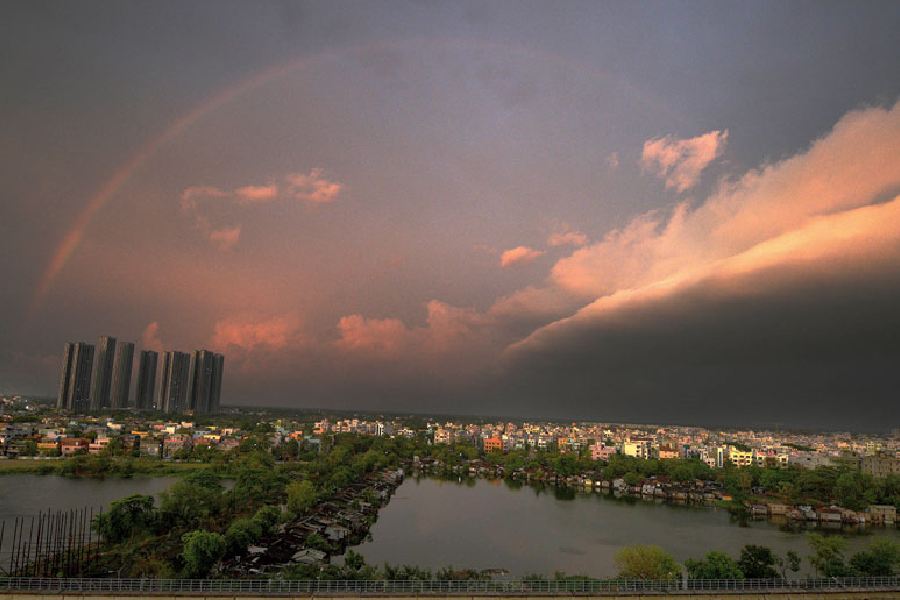The four-month monsoon season has ended with India receiving "near normal" cumulative rainfall -- 820 mm against a long-period average of 868.6 mm -- amid positive factors countering the effect of El Nino conditions, the India Meteorological Department (IMD) said on Saturday.
Rainfall between 96 per cent and 104 per cent of the long-period average (LPA) is considered normal.
However, normal cumulative rainfall over the country during the monsoon season doesn't mean even spatial and temporal spread of precipitation.
The Indian monsoon refers to inherent fluctuations and changes that occur over time due to various natural factors. This is called natural variability.
Research, however, shows climate change is making the monsoon more variable. Increased variability means more extreme weather and dry spells.
Addressing a press conference, IMD Director General Mrutyunjay Mohapatra said that with positive factors countering El Nino, the 2023 monsoon season concluded with 94.4 per cent cumulative rainfall, which is "near normal" .
In a pre-monsoon briefing, the IMD had predicted a normal monsoon for India, albeit on the lower side of normal. It had, however, cautioned that El Nino might influence the latter half of the southwest monsoon.
Monthly rainfall across the country as a whole stood at 91 per cent of LPA in June, 113 per cent in July, 64 per cent in August, and 113 per cent in September.
"Out of the 36 meteorological subdivisions, three (constituting 9 per cent of the total area) received excess rainfall, 26 received normal rainfall (covering 73 per cent of the total area), and seven received deficient rainfall. The seven subdivisions with deficient rainfall are Nagaland, Manipur, Mizoram, and Tripura, Gangetic West Bengal, Jharkhand, Bihar, East UP, South Interior Karnataka, and Kerala," the IMD chief said.
The IMD reported that East and Northeast India recorded 1,115 mm of rainfall against a normal of 1,367.3 mm, which translates to an 18 per cent deficit.
Northwest India recorded 593 mm of rainfall compared to a long-period average of 587.6 mm. Central India, where agriculture predominantly relies on monsoon rains, recorded 981.7 mm against a normal of 978 mm. The South Peninsula experienced an eight per cent deficit.
Mohapatra highlighted two factors -- the Indian Ocean Dipole and Madden-Julian Oscillation -- that significantly influenced this year's monsoon season.
He cited MJO as the most important factor that countered the effect of El Nino -- warming of waters in the Pacific Ocean near South America -- on the monsoon season in India.
El Nino conditions are associated with weaker monsoon winds and drier conditions in India.
MJO is a large-scale atmospheric disturbance originating in tropical Africa and travelling eastward, typically lasting 30 to 60 days.
The IOD is defined by the difference in the sea surface temperatures between the western parts of the Indian Ocean near Africa and the eastern parts of the ocean near Indonesia.
Mohapatra said 15 low-pressure systems developed over India during the monsoon season against an average of 13, but their temporal distribution remained "skewed".
This year, India experienced a rainfall deficit in June but saw excessive precipitation in July due to consecutive western disturbances over northwest India and a favourable phase of MJO, known for increasing convection in the Bay of Bengal and the Arabian Sea.
August 2023 marked the driest month since 1901 and the hottest ever recorded in India, attributed to the strengthening of El Nino conditions. However, September brought an excess of rain due to multiple low-pressure systems and the positive phase of MJO.
The southwest monsoon current advanced to the south Andaman Sea and Nicobar Islands on May 19, three days ahead of its normal date.
However, its further advance was sluggish. It arrived over Kerala on June 8, which was seven days behind the normal date, and covered the entire country by July 2, six days ahead of the normal date. Monsoon withdrawal began in west Rajasthan on September 25, with an eight-day delay.
Except for the headline, this story has not been edited by The Telegraph Online staff and has been published from a syndicated feed.











